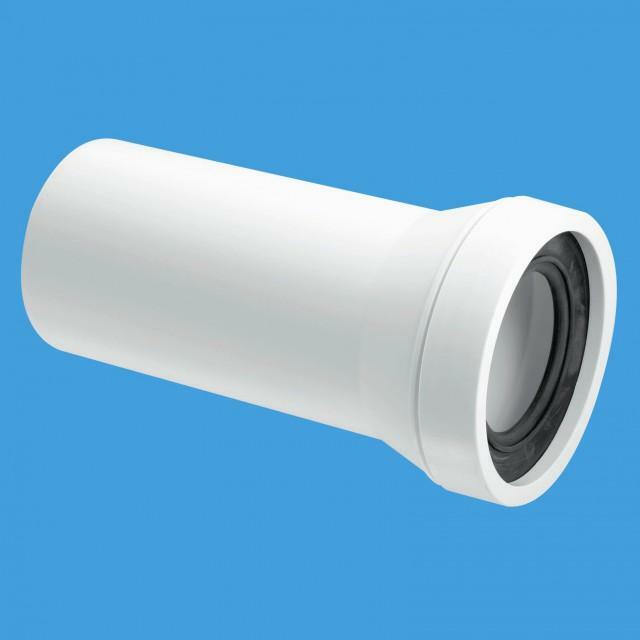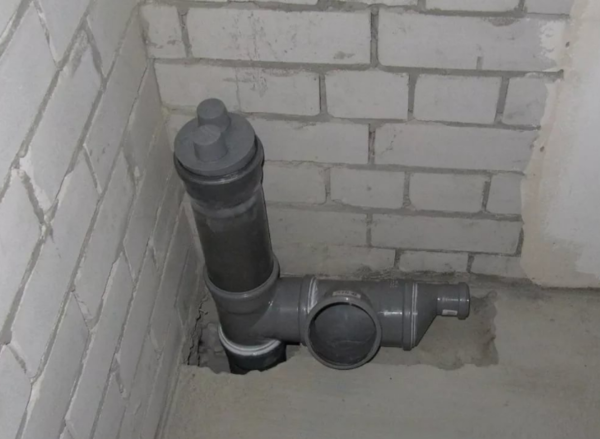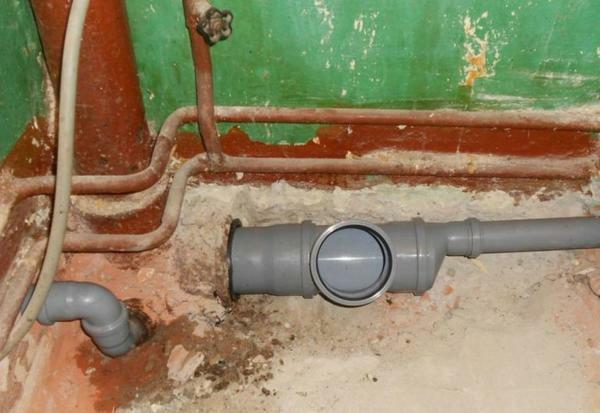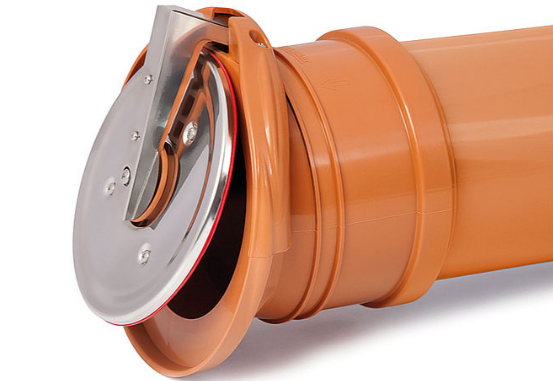 The sewer pipe is a ventilation device The pipe is a kind of ventilation for the sewage system. The installation of an exhaust design is optimal for large houses with an appropriate volume of drains. Such installation will prevent many troubles, connected with the breakthrough of pipes or the spreading of unpleasant odors.
The sewer pipe is a ventilation device The pipe is a kind of ventilation for the sewage system. The installation of an exhaust design is optimal for large houses with an appropriate volume of drains. Such installation will prevent many troubles, connected with the breakthrough of pipes or the spreading of unpleasant odors.
-
- The need for a sewage system in a multi-storey house
- Recommendations for installation and installation of a fan pipe
- Check valve for ventilation from sewer pipes
- Roof pipe rack for roofs
- Types of sewer pipes for sewerage(Video)
The need for a sewage system in a multi-storey house
A pipe used to create a sewage ventilation system. In a multi-storey building, such a device is considered necessary. But in one-story buildings there is not much sewage, so the fan tube can not be mounted. But in apartment buildings because of large volumes of drains a hydraulic shutter can tear off, and from the siphon the inhabitants will get an unpleasant smell. The pipe checks the amount of water in the siphon.
Cases where it is necessary to install a fan tube:
- Several working bathrooms in the house that can be used at one time;
- Local sewer with septic tank installed nearby;
- Large volume of waste water;
- The pipe riser diameter is 11 cm.
The construction of the ventilation pipe is strictly regulated by the building codes. Before work it is necessary to study in detail all the installation rules. In private buildings, pipes of diameters of 110 mm will be required.
 The tubing controls the amount of water in the siphon
The tubing controls the amount of water in the siphon
Do not remove the pipe to the attic. It is best to make a conclusion on the roof next to the chimney, but you can not combine the structure.
Plastic pipes are now widely used. But it is possible to apply and cast-iron variants. The shape and length of the pipes are chosen independently. Separate designs depending on the installation. So distinguish the angular, straight and vertical variants. Straight risers are installed parallel to the toilet. Angle is used for non-standard building layout. Vertical risers are actual to be mounted in houses with several bathrooms.
Recommendations for installation and installation stages of the
chimney In multi-storey buildings, installation of a fan pipe is mandatory. It will serve to control the overflow of drains. Also to the functions of the pipe is the soundproofing and elimination of unpleasant odors.
Assembly rules:
- The cross section of the fan pipe must be equal to the riser size;
- The exhaust duct can be combined with ventilation;
- It is necessary to create a contrast between the beginning and the end of the pipe, so the structure is installed in a heated place, and is exposed to cold;
- One pipe is enough for the house;
- Do not mount the pipe under the overhang of the house so that it does not get damaged by precipitation.
The pipe to the roof is exposed as carefully as possible. In this case, it is worth observing a number of rules. The maximum output height is 3 m, but it is best to set it 50 cm above the ridge. It also provides an interval from balconies and windows. It is up to 4 m.
If the siphons are small, unpleasant odors may appear. This task is also handled by the funnel.
 In a multi-storey house, the installation of a pipe is mandatory.
In a multi-storey house, the installation of a pipe is mandatory.
Before installation, the overall condition of the sewage system is assessed. Cast iron pipe should be replaced with plastic. Prepare the necessary tools in advance. It is worth remembering that the diameter of the riser should match the diameter of the fan tube. You can make a conclusion of a design with your own hands.
Assembly steps:
- Plastic pipes are connected together by means of rings and silicone.
- The wall is fixed to the wall using metal clamps.
- Next, the adapters are mounted.
- Then the riser is taken out to the roof and its rounding. You can also put on a hood. This is done so that the system does not get precipitation and pollution.
- The system then connects to the adapters and installs a non-return valve.
It is important to close the riser before installation. Also, in advance, choose the location of the pipe and its type. The hardest way to mount a horizontal version. But it has a more attractive appearance. Begin the installation is from the bottom, gradually rising up.
Check valve for ventilation from sewer pipes
The vent pipe is often installed with a non-return valve. With this device, you can not remove the pipe to the roof. But this design has other properties. Its installation can be carried out immediately after installation of toilet equipment. The principle of operation of the check valve is quite simple: during draining the device opens and passes the drains, but if the toilet is not used for a long time, an unpleasant stagnant smell will not arise in the house. The device is absolutely sealed and opens only when necessary.
Check valve functions:
- Smoothing faults associated with a slight slope of the pipes;
- Protection of the system against rodents and contamination;
- Creating an obstacle to the reverse movement of waste water.
 Non-return valve fulfills several functions
Non-return valve fulfills several functions
The device can be mounted outside or inside. It all depends on the version of the device. The non-return valve is mounted against the flow of the drains. Elements of the design are made in the form of petals, bent towards the sanitary engineering.
When installing the check valve, do not use silicone or other lubricants. The coating must remain dry during installation.
For internal installation, clean and degrease the surface well. In the following, you do not need to use any lubricants. Requires a dry mounting surface.
Roof pipe stand on roof
The conclusion of the structure on the roof is a kind of riser. In this case, there are a number of rules that prescribe the installation site. When building it is necessary to be guided by building norms.
Optimum construction height:
- Pitched roof - 50 cm;
- Flat roof, which is not used - 30 cm;
- Flat roof that is used - 3 m.
 The output of the fan pipe on the roof of the house has the form of a riser
The output of the fan pipe on the roof of the house has the form of a riser
It also provides an optimal distance to the balconies and doors. According to the construction standards this indicator should be 4 m. But it is forbidden to combine the outlet with the chimney.
Several risers should be combined in one output. To do this, select a pipe with a cross section of 110 mm. There is also a slight bias towards the gases.
You can not output a structure to an attic. Also, do not mount the pipe under the overhang of the roof. In this case, even the protective elements will not help maintain the integrity of the pipe. This can provoke the collapse of the structure.
Types of sanitary pipes for sewerage( video)
The extractor for sewer pipes performs important functions, but its installation is not needed in a single-story house. A pipe will be needed for large volumes of waste water. The installation process is strictly regulated by building codes. It is important to choose the right mounting location and the output to the roof.


